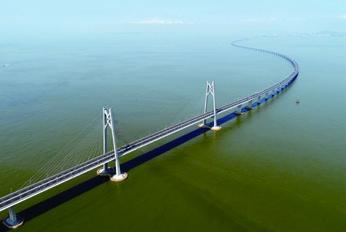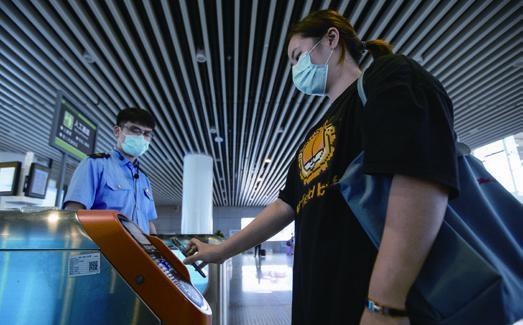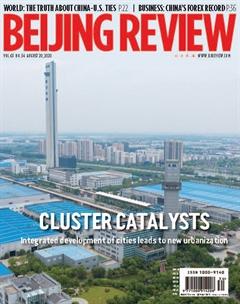NEW GROWTH DRIVER
By Feng Kui
At a meeting on July 30, the Political Bureau of the Central Committee of the Communist Party of China (CPC) proposed that investment and consumption demand should be driven through new urbanization projects.
Normally, top decision-makers make proposals for the work in the second half of the year. But this year is very different, as Chinas central and local governments are formulating development plans for the next five years, the 14th Five-Year Plan (2021-25), which is also the fi rst fi ve-year plan in Chinas journey toward modernization after completing building a moderately prosperous society in all respects in 2020.

The meeting sends an important signal: High hopes have been put on new urbanization driving investment and domestic demand. This is of significance for understanding the relationship between urbanization and macroeconomic development, and evaluating the role of urbanization in the medium and long run.
Untapped huge potential
Chinas urbanization is different from the developed Western countries. In the past, some policies, especially those related to household registration, land and social security systems, restricted the flow of population from rural areas to cities, and from agriculture to industry and commerce. Since reform and opening up, some of the policies have been abolished, but others are still in force. The government should outdate these policies to promote the fl ow of labor, land, capital, technology, data and other elements, which will create considerable investment and consumption demand.
Reviewing the history of Chinas development, one fi nds that when the economy is impacted by adverse global trends, the role of urbanization becomes more prominent. After the financial crisis in 2008, the Central Government laid emphasis on urbanization in the 12th Five-Year Plan(2011-15), and the Central Economic Work Conference 2012 noted that “urbanization has the greatest potential to expand domestic demand.”
With the novel coronavirus disease becoming a global public health crisis, and globalization facing new challenges, it is of strategic signifi cance for a big country like China to give full play to the potential of internal investment and consumption.
China is in the process of urbanization, and the current urbanization rate is 60 percent. Among those living in urban areas, more than 200 million people do not have permanent urban household registration. The 19 urban clusters planned for the 12th Five-Year Plan period and the 30 metropolitan areas promoted in the past two years have not yet been fully developed, not to mention other defi ciencies and inadequate quantity.
A meaningful role
As the current level of urbanization is not high, there is huge room for development. China should adopt more policies to promote urbanization to achieve higher quality development.
Urbanization should be given high priority in the 14th Five-Year Plan period. To make urbanization play a bigger role in promoting investment and consumption, fi rst of all, the government should accelerate the transformation of rural population into urban population. By the end of 2019, the urbanization rate of Chinas registered population was 44.38 percent, but people living in urban areas accounted for 60.6 percent of the population. Thats to say, there are 227 million people living in urban areas but without access to comprehensive public services, let alone becoming new permanent residents. In addition, another 200 million people transferred from the agricultural sector also need to be urbanized.Thus, at least 400 to 500 million people need to become urban residents in future.

New urban residents can stimulate investment and promote consumption. At present, the per-capita consumption of rural residents is only one third that of urban residents. Based on historical data, in the next one or two decades, if China can increase the urban population by 300-400 million, urban spending power would be dramatically increased.
O n M a r c h 1 3 , t h e N a t i o n a l Development and Reform Commission and 22 other departments jointly issued a guideline on improving residents consumption capacity, raising the income of key groups, and unleashing consumption potential. It requires further reform of the household registration system, so that more rural migrants who have stable employment in cities and towns can settle down there permanently.
Aside from that, the quality of city development needs to be improved to stimulate effective investment. According to a survey carried out in March by the China Center for Urban Development among 11,625 respondents in 30 provinces, municipalities and autonomous regions, the lack of parking space, insufficient public space and insufficient community service are the top three urban problems, which will become hot spots for investment in the future.
In China, the per-capita investment in fixed assets of municipal public facilities in counties is only about half of that in urban areas at prefecture level and above, and the per-capita spending of county residents is only about two thirds that of urban residents at prefecture level and above. Its foreseeable that a considerable part of the rural population will move to such counties. Therefore, its an urgent task to improve their public facilities and services to meet the demand for work and life of new residents and improve the quality of their life.
In view of the problems exposed in epidemic prevention and flood control, the public health system and related facilities will also become a field favored by investment. Projects will be implemented to improve counties medical service capacity and strengthen the construction of regional medical centers, upgrade and transform major epidemic treatment bases, improve the ability to rescue and treat critically ill patients, and stock up medical supplies and equipment.
Last, at present, the construction of urban clusters and metropolitan circles will create significant room to stimulate investment and promote consumption.
The spatial structure of Chinas economic development is undergoing profound changes. Urban clusters and metropolitan circles are becoming the main centers of economic activity. In the next five to 10 years, huge potential lies in the accelerated development of metropolitan circles and urban clusters.
On the whole, Chinas urban clusters and metropolitan circles are still at the preliminary stage of development. The carrying capacity of core cities needs to be bolstered, and small and medium-sized cities need to become more attractive and develop their own advantages. Production factors need to flow more freely between urban and rural areas and the lagging rural development needs to be boosted. Connectivity and production factors within urban clusters and metropolitan circles need to be strengthened.

